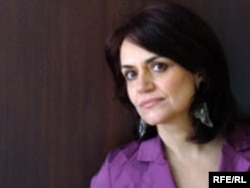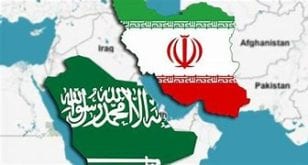Radiofarda – Forty years ago, Iranian women and girls of various political and social stripes helped to bring on Iran’s 1979 revolution to topple the shah.
But according to some of those disillusioned by decades of gender discrimination under the leadership of the ensuing “Islamic republic,” many of those same women quickly fell victim to the religiously dominated hierarchy that replaced the monarchy.
Twenty-four-year-old leftist student Chahla Chafiq was one of millions of Iranians protesting in the streets against what they regarded as the brutal and severe rule of Mohammad Reza Shah Pahlavi.
Chafiq, now a Paris-based sociologist and author, says she had joined the revolutionary movement hoping for a “better Iran” but instead she and 38 million other Iranians got a “winter of repression” that sent her into exile just three years later.
She recalls the joy and excitement giving way to shock and frustration once Ayatollah Ruhollah Khomeini and the clerical elite signaled that women would be sidelined and stripped of many of their rights.
Chafiq calls it “an intellectual earthquake.”
“I kept asking myself why I hadn’t looked, why I hadn’t seen it coming,” she says.
She remembers that amid the tumult, groups of male co-revolutionaries would brashly push men and women into separate columns of demonstrators and tell women to cover their hair with scarves.
“They would address us as ‘sisters,'” Chafiq says. “It was a new term for me.”
But the label would stick among conservatives and state officials, who routinely addressed women as “sister” or “mother” to emphasize traditional roles and devoid them of any sexuality.
“‘What’s wrong with it?'” she remembers men saying of the conspicuously religious head scarf for women that the shah’s father had banned nearly half a century earlier, elevating its political significance.
So just as the Islamic head scarf, known as the hijab, had become a powerful symbol of opposition to the Pahlavi dynasty, women were being made convenient pawns in the broader political effort to denounce the brutality, perceived inequities, and even the modernization of the past half-century.
‘Catastrophe’ In The Making
It didn’t take long for Khomeini, who had himself accused the shah of reversing gains for women, to impose a strict dress code to “save” women from “becoming this plaything that they want to turn you into.”
“There should be no sin within Islamic ministries. Naked women should not come to Islamic ministries. Women can go [to ministries] with the hijab,” the daily Kayhan quoted Khomeini as saying on March 7, 1979. “There’s no problem for them to go to work, but they need to have the Islamic hijab.”
The announcement came as a shock to many women, including Chafiq, who calls it the beginning of an era of repression against women.
“I remember it was very surprising for me, even the term he used — he said women should not go to work at ministries ‘naked.’ It was absurd and laughable. At the same time, it was the announcement of a catastrophe,” she says.
The very next day, on International Women’s Day, thousands of women and men poured into the streets to protest (see tweet below). Their chants inveighed against the chador — the full-length covering that leaves only the hands, face, and feet exposed — and challenged “dictatorship” and the notions of “should and should not in freedom.”
Read in full…
 Shabtabnews In this dark night, I have lost my way – Arise from a corner, oh you the star of guidance.
Shabtabnews In this dark night, I have lost my way – Arise from a corner, oh you the star of guidance.






